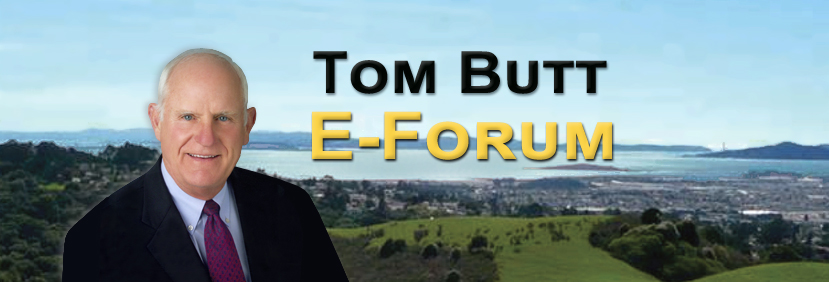|
| Once again, politics has prevailed over vision as MTC caved in to the politically powerful Bay Area Council and its Get the Richmond Bridge Moving campaign. The Get the Richmond Bridge Moving Campaign has been a fraud from the beginning, making Trump-like claims such as congestion caused by the bike lane was causing pollution an endangering the health of Richmond’ low-income communities.
The current plan is to turn the bike lane into a “break-down lane” Monday through Thursday. Since there will be no barrier Monday through Thursday, the bike lane will become the de facto third lane the Bay Area Council wants. There are no breakdowns 99% of the time, so if drivers respect its use solely as a breakdown lane, it will have no effect on relieving congestion. Nor will it help if the break down occurs in the left lane and the vehicle cannot move on its own power. The same thing could happen in the right lane if someone doesn’t get out to push. This could be interesting. But frustrated drivers will simply pull into the new “breakdown” lane and use it as a third lane. Then, when they get to the west end of the bridge where there is no capacity to handle three lanes, there will be congestion all over again.
The real problem with westbound traffic congestion is that five lanes of traffic, three from I-580 and two from the Richmond Parkway merge into three lanes at the bridge approach. Add to that additional traffic from on ramps at Canal, Harbour Way and other interchanges all the way back to I-80/I-580 split.
There are plans and hundreds of millions of dollars from RM3 funds to implement changes to the bridge approaches at each end to relieve congestion, but that will take time. The Bay Area Council wants it now.
The idea that too few bicyclists use the bike lane (actually a multi-use trail) is specious. It’s like arguing that only one in a hundred bathroom users are disabled, so why should we waste space and money on disabled access provisions?
Both BCDC and MTC appear to be on a trajectory of caving in to political pressure and abandoning their core values. Richmond-San Rafael Bridge pedestrian lane may soon be removed after four-year pilot
‘This issue is not going away,’ one bike advocate says

By SIERRA LOPEZ | slopez@bayareanewsgroup.com | Bay Area News Group
PUBLISHED: March 18, 2024 at 9:51 a.m. | UPDATED: March 18, 2024 at 10:13 a.m.
RICHMOND — Bicycle advocates are bracing for a pedestrian and bike lane to be removed from the Richmond-San Rafael Bridge, a shift transportation officials hope will alleviate traffic as alternative changes are studied.
This May, the Metropolitan Transportation Commission plans to seek approval from the Bay Conservation & Development Commission to remove the multipurpose lane Mondays through Thursdays, creating a shoulder for drivers to pull off to after collisions or breakdowns, said John Goodwin, MTC assistant director of communications.
The lane would be reopened to cyclists and pedestrians Friday through Sunday, under the current plan. This comes about four years after the pedestrian lane opened as a pilot program.
“It’s an attempt to balance legitimate competing interests,” Goodwin said.
Officials broke the news to bike advocates in a meeting Thursday. Warren Wells, policy and planning director for the Marin County Bicycle Coalition, and Robert Prinz, advocacy director with Bike East Bay, said the update came as a surprise. Both organizations had expected the lane to remain as is until a final report on the pilot program could be finalized and released this summer.
While Goodwin described use of the lane as “underwhelming,” the bicycle advocates have argued it serves as an important connector — especially for non-vehicle commuters who would otherwise have to rely on a bus — between the East Bay and North Bay. Wells said the lane can see between 80 and 250 users daily, depending on the day of the week and weather.
Initial reports also indicate the lane hasn’t amplified vehicle traffic, which has been an issue along the corridor long before the lane was installed, Wells, Prinz and Goodwin agreed. All three also acknowledged that long-term remedies will take years to develop.
“At the very least, we were expecting MTC to gather data on the cost and benefits of the pilot before making a decision,” Wells said.
The news came just days after the Bay Area Toll Authority Oversight Committee approved spending another $2.5 million on the Richmond-San Rafael Forward initiative. Most of those funds will go toward completing designs for an open road tolling project which would replace the existing toll plaza and allow traffic to flow more freely onto through the bridge. The remaining $1 million will cover a study into alternatives to a third high-occupancy vehicle lane on the upper deck where the multi-use lane currently exists.
John Grubb, chief operating officer of the Bay Area Council, an influential business advocacy group, thanked the commission for their decision.
Wells during the meeting shared his disappointment in seeing the commission move forward with evaluating another lane before a report on the multi-use lane trial could be finalized. Even after that meeting though, Wells said he thought the lane would remain in place until at least the summer.
Those expectations now dashed, the groups said they’re planning to continue advocating for bike and pedestrian access on the bridge.
“Whatever happens with the path, this issue is not going away,” Prinz said. |

